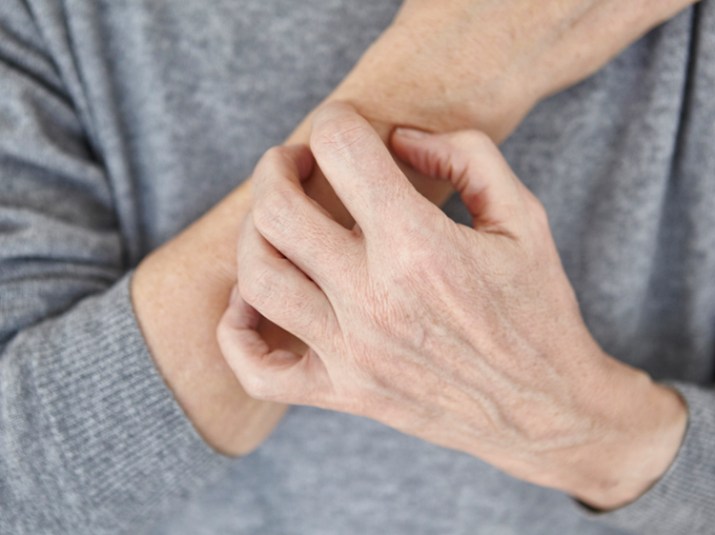4 Common ‘Hidden’ Allergies, And a Few Effortless Ways to Remedy Them

Could you really be allergic to fruit or your phone? If you’re having random allergic reactions or annoying health problems that won’t go away — such as hives, itchiness, or a rash — there’s a good chance that hidden allergies could be to blame. Here are the most common culprits to consider:
1. Melons — if your mouth is tingly, itchy, or swollen. Think you could be allergic to watermelon without realizing it? Watermelon, honeydew, and cantaloupe all contain a common allergy-provoking protein that’s similar to the pollens in ragweed or grass. So if you react to ragweed, grass, or birch, your immune system may mistake these melons for pollen, causing an allergic reaction. “Oral allergy syndrome occurs in people who have seasonal hay fever, and the pollens that are outdoors can actually cross-react with pollens in a lot of fresh fruits and vegetables,” explains Sandra Hong, MD, an allergist and immunologist at The Cleveland Clinic. Other potential troublemakers in the produce aisle include pitted fruits, carrots, celery, tomatoes, oranges, bananas, cucumbers, and zucchini. Find a complete list at AAAAI.org.
Rx: Microwaving fruit and veggie slices for 15 seconds breaks down the protein, says Dr. Hong. You can also switch to canned varieties. If your symptoms include swelling of the throat or difficulty breathing, see an allergist.
2. Your jewelry or cell phone — if your ear, face, or hands are rashy. Nickel is often used to make handheld devices, jewelry, eyeglass frames, wearable fitness trackers, and even buttons on jeans. This metal is a common cause of dermatitis or skin irritation in susceptible folks.
Rx: Use an over-the-counter spot test such as Nickel Solution ($34.95, Amazon) to detect the metal quickly and easily in suspect items. If it turns out that your phone has it, use the speakerphone option, hold the device away from your skin, or use it with a wraparound cover, ear buds, or a headset. Got troublesome jewelry? Try painting the metal that touches your skin with clear nail polish. Still have a problem? Ask your doctor to do a patch test to confirm that you have a nickel allergy and then treat the symptoms with medication.
3. Your pillow — if your eyes itch or if you wheeze a lot. A build-up of microscopic dust mites in bed pillows is a common cause of eye irritation, wheezing, and sneezing.
Rx: Encasing your pillow in a zippered, airtight cover (and your mattress, comforter, and box spring) “makes a world of a difference,” says Juan Guarderas, MD, an allergist and associate professor at the University of Florida Department of Medicine. He also recommends laundering bedding on your washer’s hottest temp and using a dehumidifier.
4. Your refrigerator door — if you’re constantly tired. At least 83 percent of refrigerators have mold growing on their accordion-like door seals! Your front-loading washing machine rim and shower curtain may also collect mold, which in addition to fatigue, can cause sneezing, itchy, watery eyes, and nasal congestion.
Rx: Swipe-wipe the seals and other areas weekly with a bleach-based cleanser to kill mold spores instantly, and keep moisture levels low with a dehumidifier.
More from Woman’s World
Do Hypoallergenic Cats Really Exist?
Natural Remedies for Allergies That Really Work
8 Funny Quotes About Spring Only Seasonal Allergy Sufferers Will Understand












